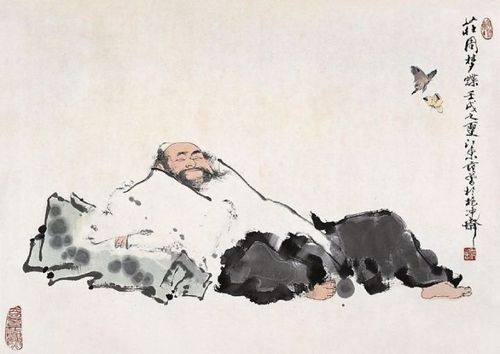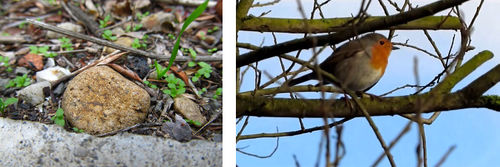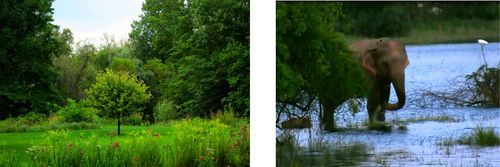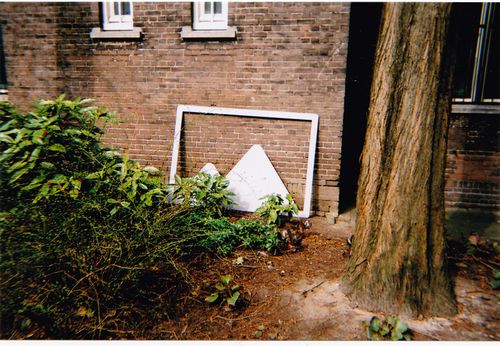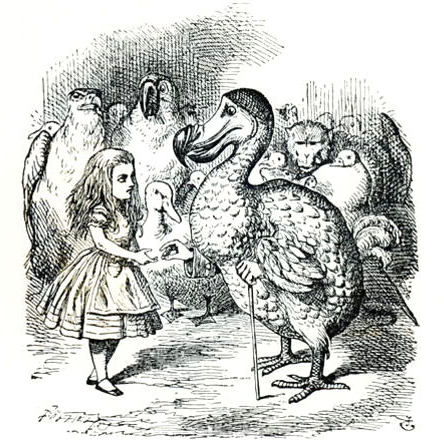Graduate Proposal SOL
Abstract
MAKE MORE STORIES AND FIND A FORM TO DISPLAY THEM
Would you believe in what you believe in if you were the only one who believed it?
I want to make more stories with the method I used last year with the JOURNEY TO FUJI and ZOOLOGY ILLUSTRATION (described below). I want to make more stories using a combination of the fictional and factual. A second aspect of my research is, what is the best way to display all the pieces together? and how do they relate with each other?
ALICE DISPLAY
The graduation location is almost sure that it will be Piet Zwart, therefore the studio becomes part of work. For instance, I have been thinking of making a huge Alice which fills the studio, the figure is based in the story from Lewis Caroll’s ‘Alice in Wonderland’. Alice is made of varied materials such as newspapers, magazines; digital devices like TV screens and lights (she has a media body). This body is too big for the space. The TVs and other media devices will display my stories, such as the story of ZHUANGZI (described below), and the JESUS IN THE SKY and UFO NEDERLAND videos (described below). Alice is carrying all my stories. First I want sketch some positions of the body in the room and then I want to try out a scale model from 1 meter and make a room around it. I want to make the model with chicken-wire and paper masse, see how the materials work.
These are some of the elements that are embedded in the display ( maybe like Alice):
ZHUANGZI STORY
The story of ZHUANGZI, The Butterfly Dream, as my placeholder. I’m going to interchange words, like ‘Zhuangzi’ and ‘butterfly’, of the original story. My versions of this story creates a different kind of relationship, and a different intersubjectivity. With this placeholder I created visuals, the story is to support the images.
The story is intended as more than a charming episode in the life of a sage: it is meant to make a philosophical point about what we take to be real. The general question – do I wake or sleep? – seems both valid and ultimately unanswerable. If we do not know whether we are waking or dreaming, we cannot appeal to a body of knowledge belonging to the world of the waking. All the sights and sounds, feelings and emotions in the dream can be just as vivid and intense as our experience in reality. The story is an exercise in detachment in two areas of life: emotional obsessions and material obsessions. The realization that if we can see how dreams can seem completely real, then we can also see how reality can be just like a dream. There is the temptation to find oneself ‘understanding everything correctly.’
Original
Once upon a time, I, Zhuangzi, dreamt I was a butterfly, fluttering hither and thither, to all intents and purposes a butterfly. I was conscious only of following my fancies as a butterfly, and was unconscious of my individuality as a man. Suddenly, I awaked, and there I lay, myself again. Now I do not know whether I was then a man dreaming I was a butterfly, or whether I am now a butterfly, dreaming I am a man. Between a man and butterfly there is necessarily a barrier. The transition is called Metempsychosis.
Version 1
Once upon a time, I, stone dreamt I was a bird, fluttering hither and thither, to all intents and purposes as a bird. I was conscious only of following my fancies as a bird, and was unconscious of my individuality as a stone. Suddenly, I awaked, and there I lay, myself again. Now I do not know whether I was then a stone dreaming I was a bird, or whether I am now a bird, dreaming I am a stone. Between a stone and bird there is necessarily a barrier. The transition is called Metempsychosis.
Version 2
Once upon a time, I, tree dreamt I was an elephant, tramping hither and thither, to all intents and purposes as an elephant. I was conscious only of following my fancies as an elephant, and was unconscious of my individuality as a tree. Suddenly, I awaked, and there I lay, myself again. Now I do not know whether I was then a tree dreaming I was an elephant, or whether I am now an elephant, dreaming I am a tree. Between a tree and elephant there is necessarily a barrier. The transition is called Metempsychosis.
Version 3 – Cat & Bat
Version 4 – Waterfall & Whale
Version 5 – Human & Butterfly
Metempsychosis: The transmigration of the soul, especially the passage of the soul after death from a human or animal to some other human or animal body.
THE JOURNEY TO FUJI
THE JOURNEY TO FUJI– is a fiction combine with factional - story, based on where does the ‘two mountain’ symbol comes from. The symbol of ‘two mountains’ represents the ‘empty placeholder‘ or a symbol of an image. What does that say? What kind of language is it? Where does the symbol comes from? It’s not just a sign. It’s starts a dialogue with the symbol, that you usually take for granted. By researching all the different symbols from mountains I bumped in to the symbol of landscape mode on a camera. I immediately saw a connection with the Fuji Camera and the Fuji Mountain in Japan. I was never sure if the symbol comes from there, but I came up with a fictional-factional story about the mountain-symbol. In combination with the installation it has creates a kind of Japanese- myth experience. I wanted to change the context of the symbol, and the point of view of the ‘two mountains’ in order to start this dialogue. I want to use the same research method as what I did with the THE JOURNEY TO FUJI – project, to come up with more story for symbols like; Wifi-symbol, Apple-symbol, Recycle-Bin symbol, ect.
ZOOLOGY ILLUSTRATION
Last year I found a practice and language as a visual artist reflecting media culture by playing between fact and fiction. During the third Thematic Project with Florian Cramer I embraced myself as a storyteller and maker. Creating disappearance of an object/image, by showing my own categorization (referring to Jorge Luis Borges in ‘Celestial Emporium of Benevolent Knowledge’) with (hard to classified) existing, non- existing and fantasy animal illustrations in the project ZOOLOGY ILLUSTRAION. By showing this with a slide projector creates an zoology class in the old-days. You will not know what’s real or not, you enter my little fantasy world. The Guide shows you the classification of alive, extinct and fiction with a short description of the animal. The text involved also a combination of factional and fiction. This all together with an audio voice telling you this descriptions and when you have to go to the next slide, makes my installation of ZOOLOGY ILLUSTRATION completed.
SKY HAPPENINGS
I created two video compilations, one using the search UFO NEDERLAND, the other one with the search JESUS IN THE SKY, both on Youtube. What you see is a lot of skies with flashing lights or clouds, and the responses on the background of the video, some with nice added sounds and visuals, to support that there is something there. Most of the time you see nothing, just empty sky. You are experiencing their informed desire, through the video that they make and attempt to create proof that it is real by putting it online. We all see the same things because they are shared symbols. If you believe in God, you will see him all the time. Symbols are often conceptualised as intersubjective only to the extent that they are shared. Language, is composed of symbols that we share, and because we share these symbols we are able to communicate, it’s the psychological relation between people. A good example is to believe in a religion, they all have the same language and share the same symbols. The sky in the videos feels also like an abstract painting, because most of the video makers experience an emotional feeling. To compare it with, for example, the famous painter Rothko, where you get an overwhelming emotional experience by just looking at his colourful painting. It works as a mental exercise. World is very rich, if only just the sky can trigger your imagination and your beliefs.
I believe during the video compilation of the UFO NEDERLAND and JESUS IN THE SKY, the video makers are experiencing a MacGuffin. The MacGuffin is a pure void which functions as the object cause of desire. There is something that attracts the viewer but what it is, is not clear, it spins a story around nothing. A pure nothing which is none the less efficient. An MacGuffin is a goal, desired objects, or other motivator. The types of MacGuffin can be an object, place, person, or more abstract, victory, glory, power, love, or some unexplained driving force. Most clear MacGuffin’s you will see in movies like the suitcase of PULP FICTION, as a void and the whole story spins around this suitcase. In art you see MacGuffin all the time, as a placeholder, or as frame. for example what I did with the JOURNEY TO FUJI story, the image-placeholder symbol was my MacGuffin and I created a story around that.
Link to my channel on Youtube to UFO NEDERLAND
NOTE
I don’t try to fool the viewer or make a gimmick, I want to examine their beliefs. We find ourselves believing, and believing in whatever we perceive as enabling us to thrive. The unknown make us curious and make us want to invest or belief in them. It has to be something, we want an answer, it can’t be nothing. The desire is so big that we want to know, so we imagine. We believe (most of the time) with each other, because we communicate with the same intersubjective language. I think intersubjectivity can play a big role in communication of the work; let the viewer belief by using symbols we all share (like the Fuji-story). That’s why I come up with two plans, to research two different kind of languages. One, a storytelling way to give symbols more than what they are, and a way to display them. What is the best way to display all of them together and how do they relate with each other?
Method
Last year I created a Uncreative Tool for methodologies, this year I’m going to expend this tool and use it as a guide for my graduate project. This tool is to help you in a creative process by showing u all different kind of ingredients what you can use on your topic, object, image, your start. During my own project-process I create more ingredients for the Uncreative Tool, so this tool is also an ongoing process.
-->> Proposal has a tail..
References
BOOKS
Barthes, Roland. "The Reality Effect." The Rustle of Language. New York: Hill and Wang, 1986. 141-48. Print.
Baudrillard, Jean, and Sheila Faria. Glaser. Simulacra and Simulation. Ann Arbor: U of Michigan, 1994. Print.
Borges, Jorge Luis, and Margarita Guerrero. The Book of Imaginary Beings. New York: Dutton, 1969. Print.
Carroll, Lewis, and John Tenniel. Alice's Adventures in Wonderland ; &, Through the Looking Glass. New York: Macmillan, 1963. Print.
Duve, Thierry De. Kant after Duchamp. Cambridge, MA: MIT, 1996. Print.
Eco, Umberto. Travels in Hyper Reality: Essays. San Diego: Harcourt Brace Jovanovich, 1986. Print.
Grasskamp, Walter. André Malraux Und Das Imaginäre Museum: Die Weltkunst Im Salon. München: C. H. Beck Verlag, 2014. Print.
Joselit, David. "After Art, David Joselit." Joselit, D.: After Art (eBook and Hardcover). POINT: Essays on Architecture, n.d. Web. 11 Nov. 2015.
Serafini, Luigi. Codex Seraphinianus. New York: Abbeville, 1983. Print.
Žižek, Slavoj. The Plague of Fantasies. London: Verso, 1997. Print.
Žižek, Slavoj. The Sublime Object of Ideology. London: Verso, 1989. Print.
MAGAZINE / JOURNALS
"What Is Post-Internet Art?" Elephant, Issue 23 July 2015: n. pag. Print.
Journal, E-Flux. "Hito Steyerl: The Wretched of the Screen." Hito Steyerl: The Wretched of the Screen (n.d.): n. pag. Sternberg Press. Web. 2012.
WEBSITES
Abelow, Dan. "After the Internet: Are We One Step Away From an Advanced Digital Earth?" Wired.com. Conde Nast Digital, n.d. Web. 11 Nov. 2015.
Steyerl, Hito. "Too Much World: Is the Internet Dead?" Too Much World: Is the Internet Dead? E-Flux, n.d. Web. 11 Nov. 2015.
Crossley, John. "Leeds 13." Leeds 13. N.p., n.d. Web. 11 Nov. 2015.
"¤ C I R C L E M a K E R S ¤." ¤ C I R C L E M a K E R S ¤. Pair Networks, n.d. Web. 11 Nov. 2015.
"Museum of Art Fakes." Museum of Art Fakes. N.p., n.d. Web. 11 Nov. 2015.
MOVIES
Fantastic Planet. Dir. René Laloux. By Stefan Wul, Roland Topor, and René Laloux. Argos Films, 1973.
Inception. Dir. Christopher Nolan. By Christopher Nolan. Perf. Leonardo DiCaprio, Joseph Gordon-Levitt. Warner Bros., 2010.


